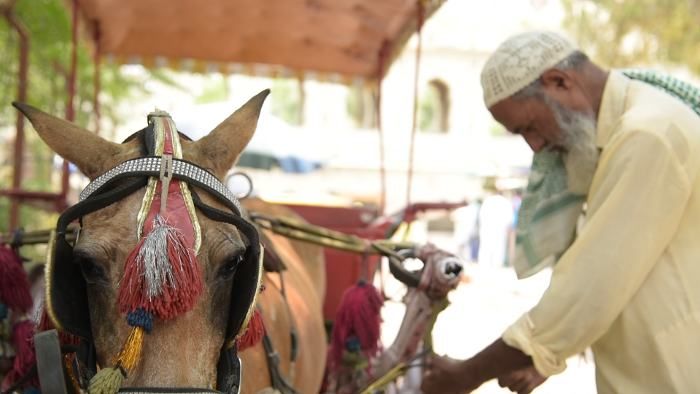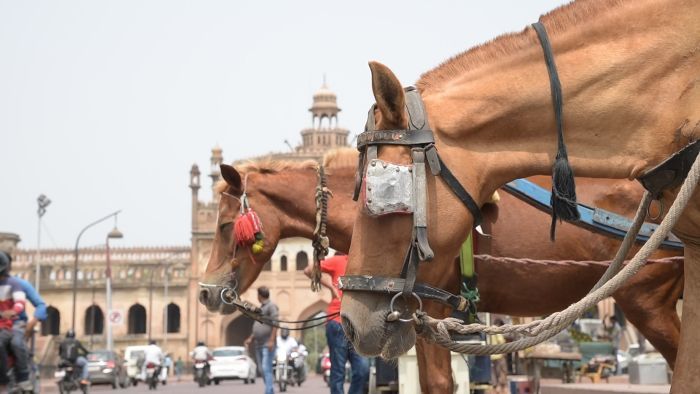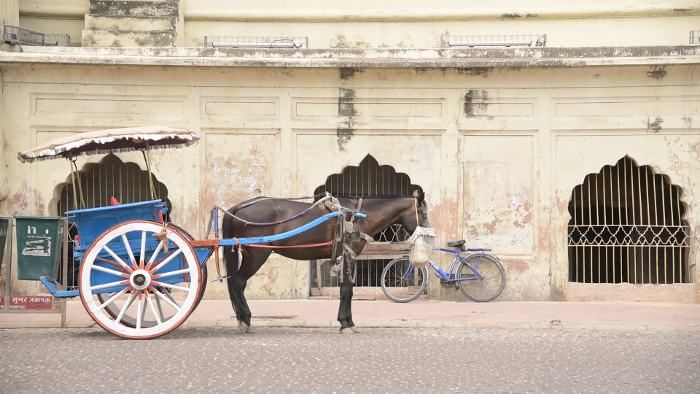“There was a time when we would hang lanterns on each side of our taangas for the post-sunset rides”
In old Lucknow, India’s historical hub, you will find the fading profession of pulling horse carriages – a nawabi trend that is now finding very few takers. We spent a day with one such taanga wala


Deepanshu Mishra
Raju and Jaggan Khan have been friends from the past 10 years. Every morning Jaggan decks Raju up and together they step out of their home to make a living. Both Raju, the horse, and Jaggan, the horse cart owner, are inseparable.
“Raju is very dear to me. I bought him 10 years back when he was a baby. Since then he has been an obedient and hard-working friend,” said Khan, 65, patting his horse. Both were waiting patiently for a ride outside Rumi Darwaza, an imposing gateway in Old Lucknow that was built in the 18th century. Khan has been riding his taanga — a two-wheeled single-horse driven wooden-cart — for the past 50 years. He lives in the Khadra area of Old Lucknow with his wife and four children. His father was also a taanga wala. Khan chose to continue the family tradition.
The taangas are a part of Lucknow’s rich nawaabi history. The royal families would take rides in these chariots. They became quite popular after the 19th century as taangas were the only mode of transport. After a few years, during the colonial rule, taangas were covered with sheds to protect passengers from sun and rain. Then there used to be the ikkas – the one or two-seater horse carts that too were used for private rides. The modern-day taangas are modified version of khad-khada and are mostly found near Imambara in old Lucknow.

Khan manages to make about Rs 500- 600 per day. “I spend about Rs 100 to feed Raju and the rest I spend on my family. Basic things like groceries and medicines are so expensive these days. It’s difficult to make a living,” said Khan.
Khan has seen many ups and downs in his business. “There was a time when taangas used to be the only mode of transportation in Lucknow. Those were beautiful days. We would hang lanterns on each side of our taangas for the post-sunset rides.” While Khan is possessive about Raju, his favourite was Laxmi, his ex (horse).
“I can never forget Lakshmi. She was very agile and sharp. She knew the road leading to my house so well that she could reach there on her own from any part of Old Lucknow,” said Khan.

Khan had a choice to take up any profession, but his love for horses and riding taangas dominated his desire to do something else. “We took pride in riding taangas, but the younger generation feels ashamed to ride one or to hire one for a ride. Thankfully, tourists, both local and foreigners, prefer taangas while visiting local attractions like Rumi Bazaar or Imambara. It’s a novelty for them.”
Khan’s taanga has featured in many movies as well. “Many directors have used my taanga as a prop. I have also taken many royal families on a ride,” said Khan. Juggan is a content man. “If I can feed Raju and my family at the age of 67, I can’t ask for more.”

